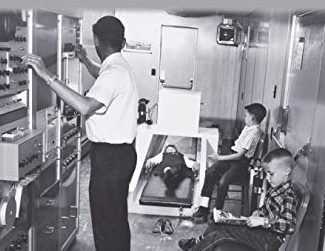Book Review: ‘The Hanford Plaintiffs: Voices From The Fight For Atomic Justice’

THE HANFORD PLAINTIFFS:
Voices from The Fight for Atomic Justice
Trisha T. Pritikin (University Press of Kansas)
In the 1940s, the US government was working hard on the secret development of atomic weapons. The weapons were seen as a key to winning World War II and keeping the peace in the post-war era.
But the development of these weapons of mass destruction had more victims than those of Hiroshima and Nagasaki. In fact, many US citizens were victimized by the radiation and radioactive waste emanating from various locations where the Manhattan Project was underway, and later from the atomic testing done in the open to rattle the sabre of US invincibility toward its enemies.
 This book chronicles the personal tales of the victims of those actions, giving voice to their attempts to understand why they had so many health problems and painful deaths in their lives. It also provides chilling testimony to the government’s refusal to acknowledge what it had done.
This book chronicles the personal tales of the victims of those actions, giving voice to their attempts to understand why they had so many health problems and painful deaths in their lives. It also provides chilling testimony to the government’s refusal to acknowledge what it had done.
The testimony of one victim sums up the book’s meaning: “I thought that, certainly, once Hanford’s releases were common knowledge, the government will want to start turning over all the stones to protect the public. And what I found out is that they don’t want the stones turned over. In fact, they want other stones heaped on them to obscure them.”
The nuclear plant at Hanford, Washington is the book’s main focus and was a particular locus for radiation sickness. The so-called “downwinders” suffered greatly from the radiation dumped in the nearby rivers and released from the site itself. In page after page of testimony, these victims of the atomic age detail their suffering, and the often-naïve efforts to get someone, somewhere to admit the truth of what was wrong.
The book doesn’t have a happy ending, as many of the Hanford victims were forced into a legal settlement that minimized their pain and suffering. What’s worse, there are many other locations throughout the United States where similar tragedies occurred, leaving the reader with a sense of hopelessness and denting any faith that someone will step up and do the right thing for these people damaged by the atomic age.
As much as the nuclear bombs that leveled Japanese cities serve as a warning to mankind that we should never again cross that line, so, too, does Pritkin’s remarkable book stand as a cautionary tale of government overreach and abuse. If we are to learn anything from this, it’s that trifling with nature and then covering up the results is a formula for disaster. Readers will walk away from the book disillusioned at what happened, but perhaps determined that it should not happen again.
